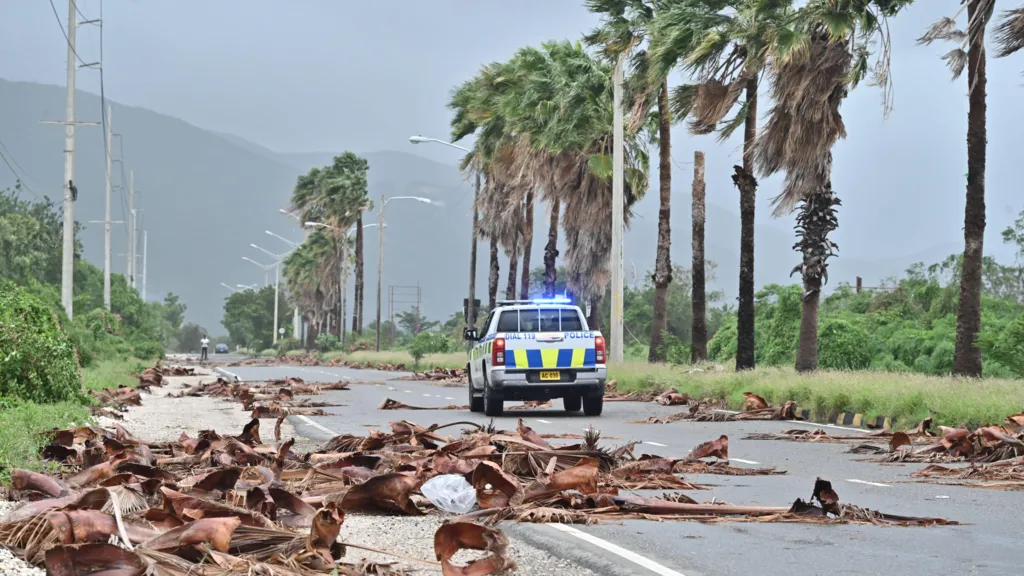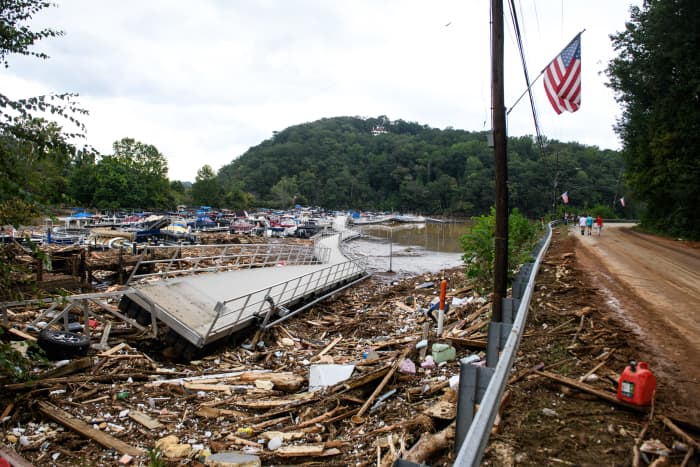
This article is more than
2 year old
High altitude moisture, warm temperatures, soggy soil and the lifting effect of mountains fueled the already-powerful storm.
Helene was big, fast and swollen with moisture from both the upper atmosphere and ground below when the tropical storm struck the mountainous region of North Carolina and Tennessee. Many residents there hadn’t experienced a storm of such a magnitude in their lifetimes, and many were caught unprepared.
“This is our worst storm that’s happened in modern times in North Carolina,” said Kathie Dello, director of the North Carolina State Climate Office.
Meteorologists said a combination of weather patterns, plus the supercharging effects of climate warming, contributed to the destructive path of Helene hundreds of miles inland from the coast.
Normally, storms weaken quickly after striking land, but Helene was juiced by a high-altitude plume of moisture from the tropics, as well as rain-soaked ground below, said Marshall Shepherd, director of the atmospheric sciences program at the University of Georgia.

One explanation for how the storm behaved over land is what scientists describe as the “brown ocean effect.” Typically, warm ocean waters fuel hurricanes, but rain-soaked land—the “brown ocean”—can also power such storms under the right conditions. While hurricanes are expected to weaken after they make landfall, scientists have suggested that the moisture drawn from warm, soggy soil can recharge a storm.
Based on reports so far, “This is a classic scenario where the brown ocean effect may have played a part,” said Dev Niyogi, an atmospheric scientist at the University of Texas at Austin who has studied the phenomenon in North America and the Indian subcontinent.
The storm was also made stronger because it was pushed upward by the mountains of the southern Appalachians, resulting in atmospheric condensation, which creates even more rainfall.
This combination of forces, from above and below, kept Helene moving as a powerful tropical storm hundreds of miles inland.
Shepherd said a cold front had dumped 4 to 6 inches of rain in parts of the region a few days ahead of Helene. With the ground already saturated, it was less able to absorb the additional torrential rainfall, leading to floods, mudslides and landslides. Some areas of North Carolina received nearly 30 inches of rain during the storm.
While forecasters warned of dangerous rainfall, many residents in the mountains didn’t have experience with such a storm.
“I think it’s really difficult to translate what 24 inches of rain looks like on the ground and the damage that it can cause,” Dello said.
A team of scientists at the Lawrence Berkeley National Laboratory calculated that a warming climate might have caused as much as 50% more rainfall during Helene in parts of Georgia and the Carolinas than a similar storm without the effects of climate change.
Helene was born in the Caribbean, where for more than a year, scientists have detected record-setting temperatures that fuel hurricanes. The ocean heat is the result of a combination of the lingering effects of an unusually powerful global weather pattern known as El Niño, and the ever-increasing effects of climate change.
A tongue of unusually warm water recently reached north from the Caribbean toward the Florida Panhandle. Hurricanes need water temperatures of at least 82 degrees Fahrenheit to sustain themselves, but Helene crossed temperatures of 90 degrees, according to the National Oceanic and Atmospheric Administration.
The full scale of damage from the North Carolina mountains is still emerging as shocked residents come back online. “The people I’ve talked to up there are rattled,” Dello said. “They’re very, very sad.”
Write to Eric Niiler at eric.niiler@wsj.com. Write to Nidhi Subbaraman at nidhi.subbaraman@wsj.com